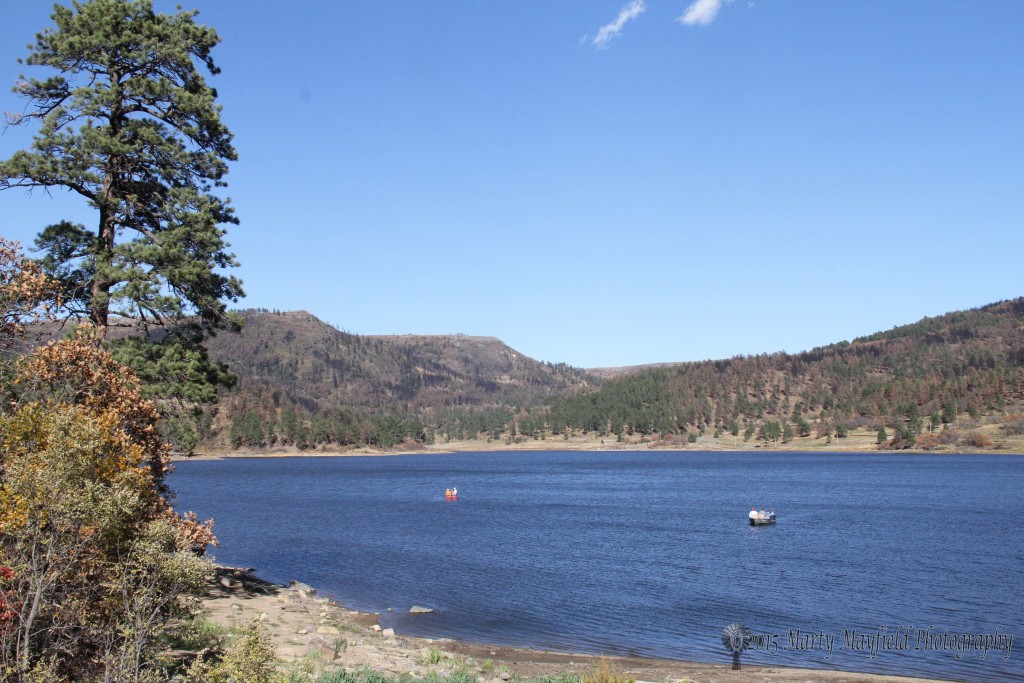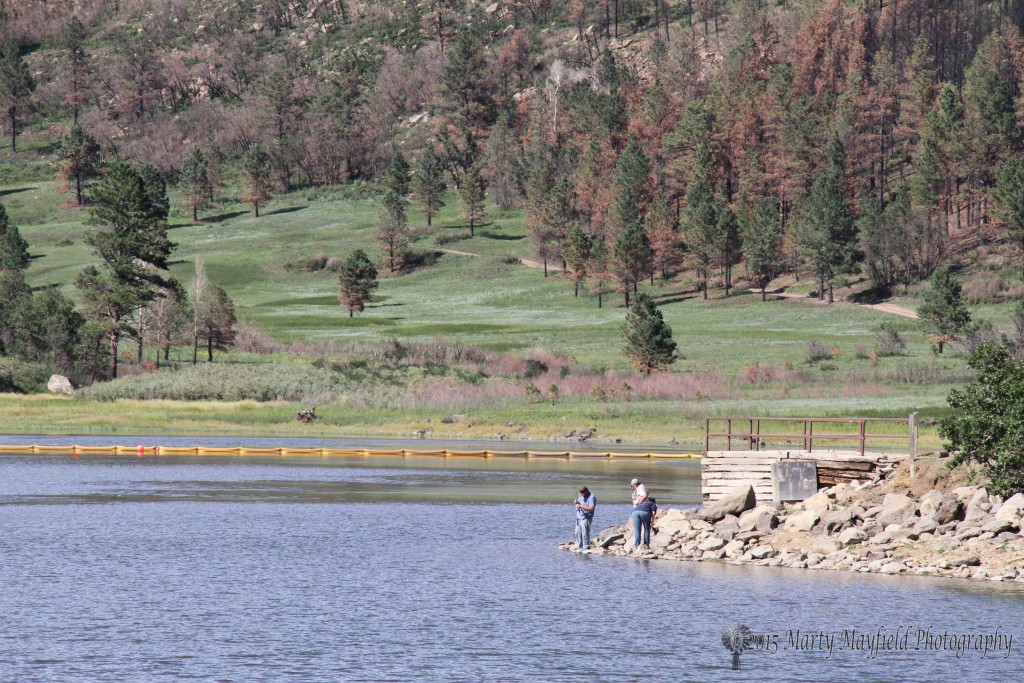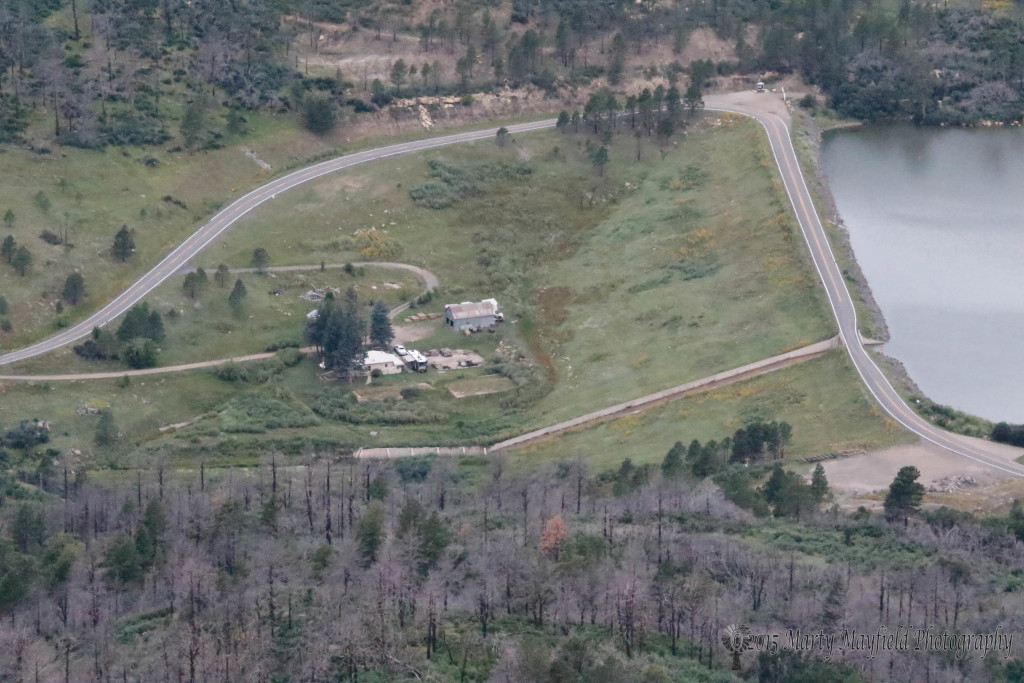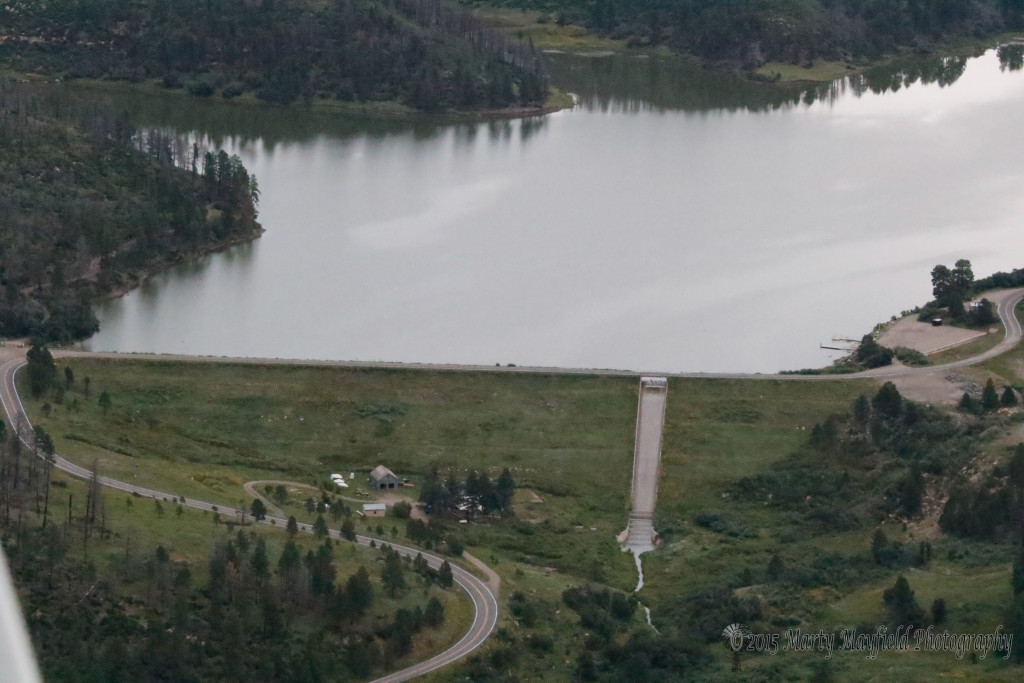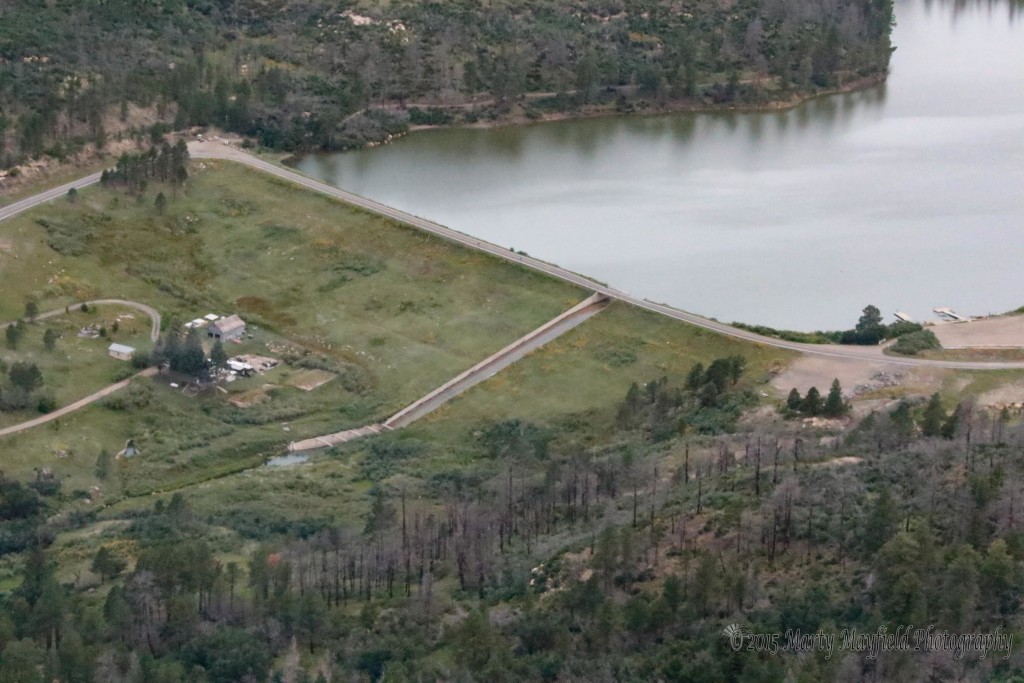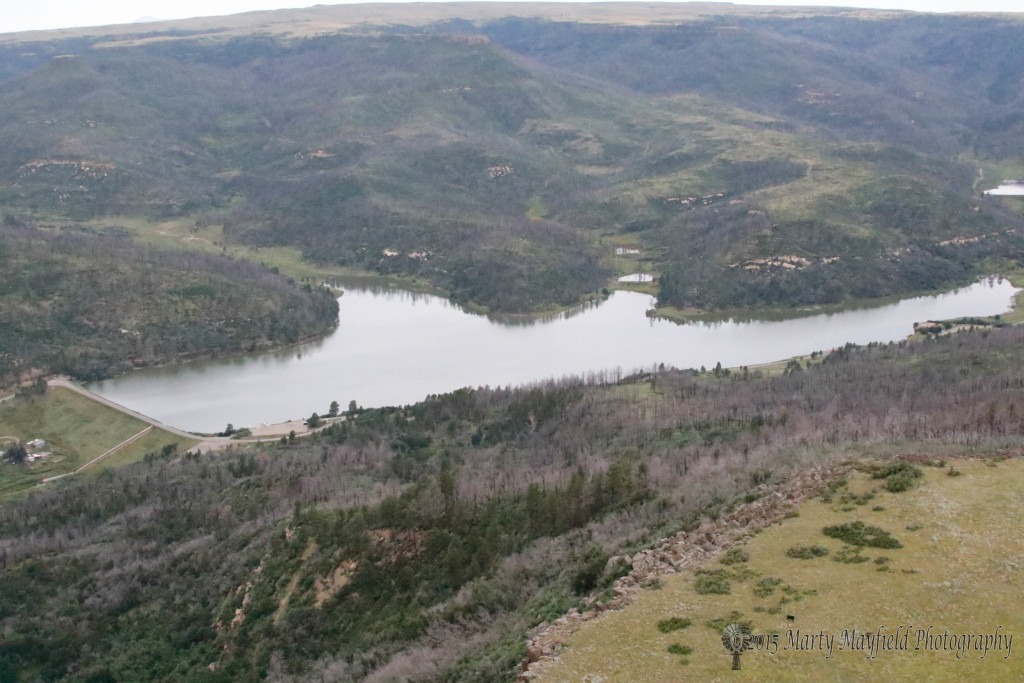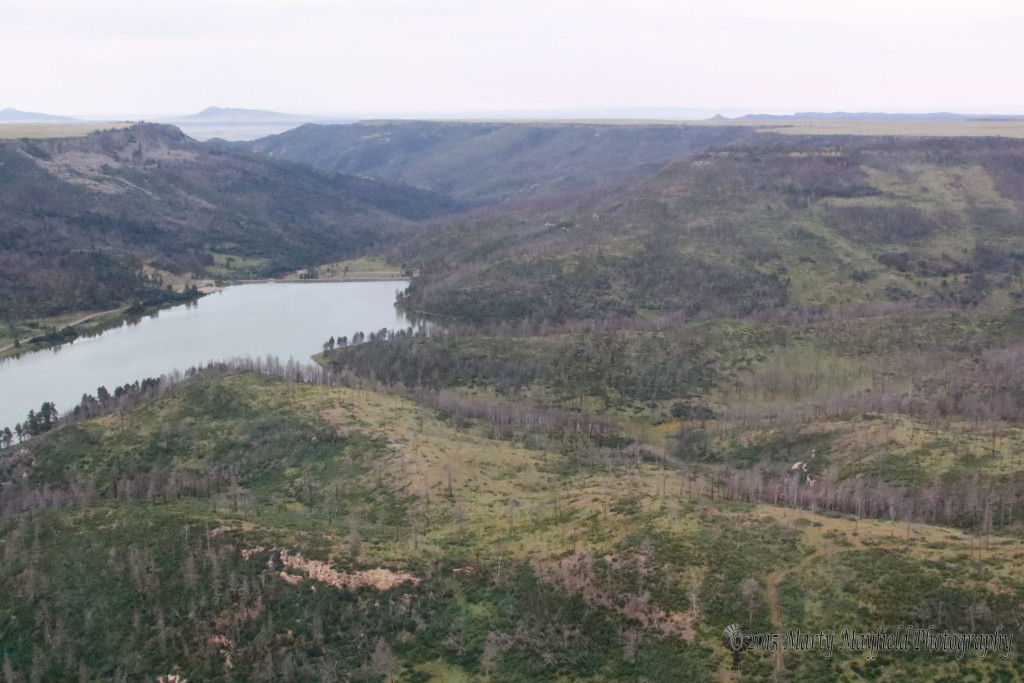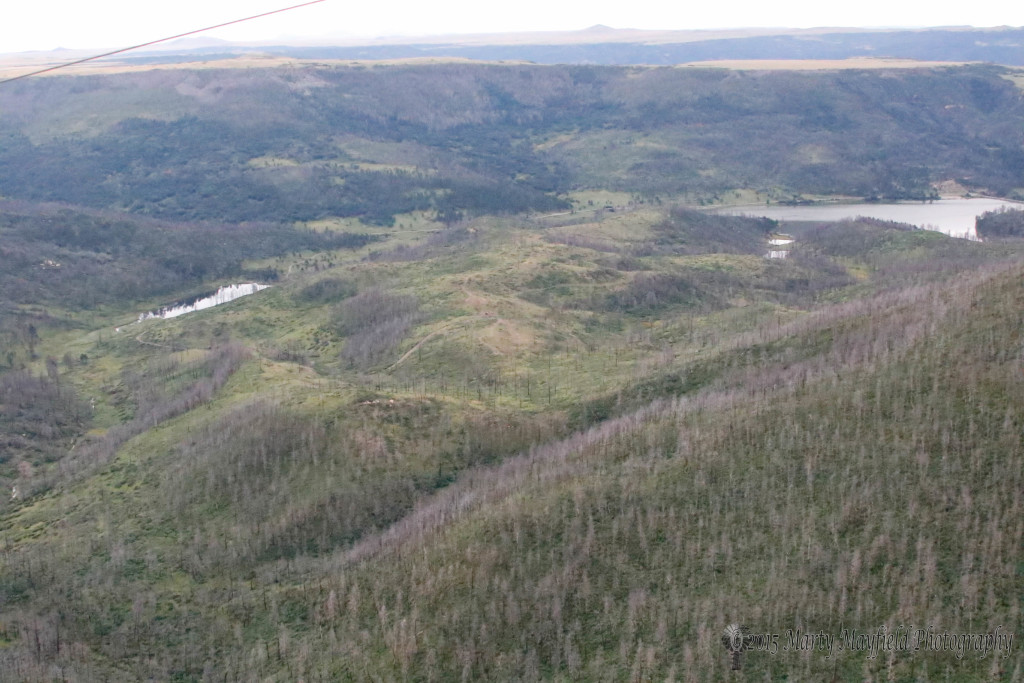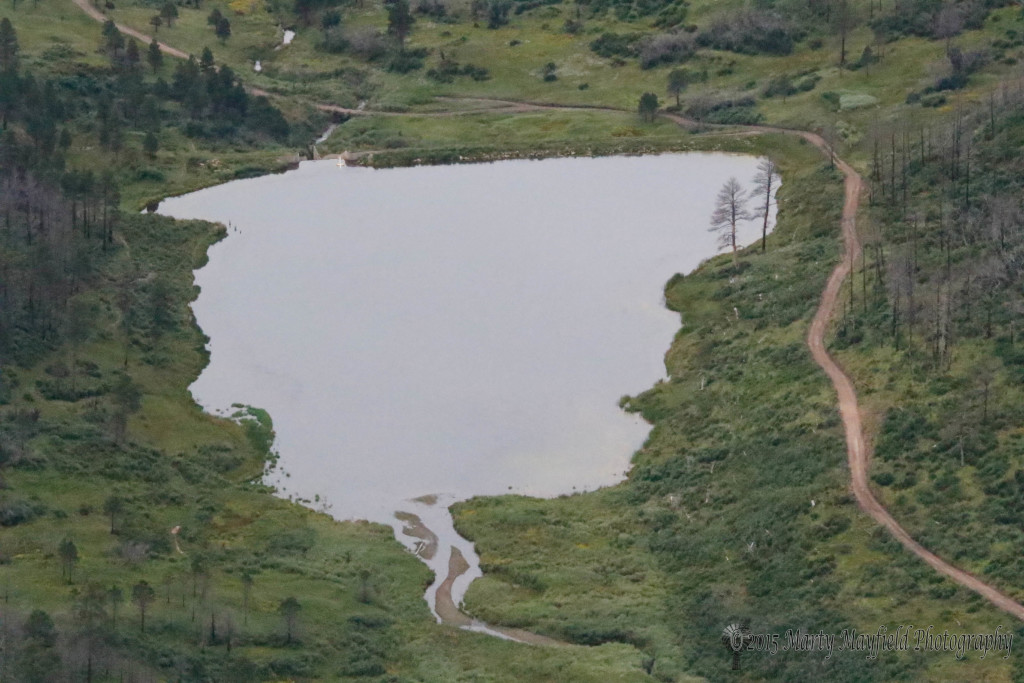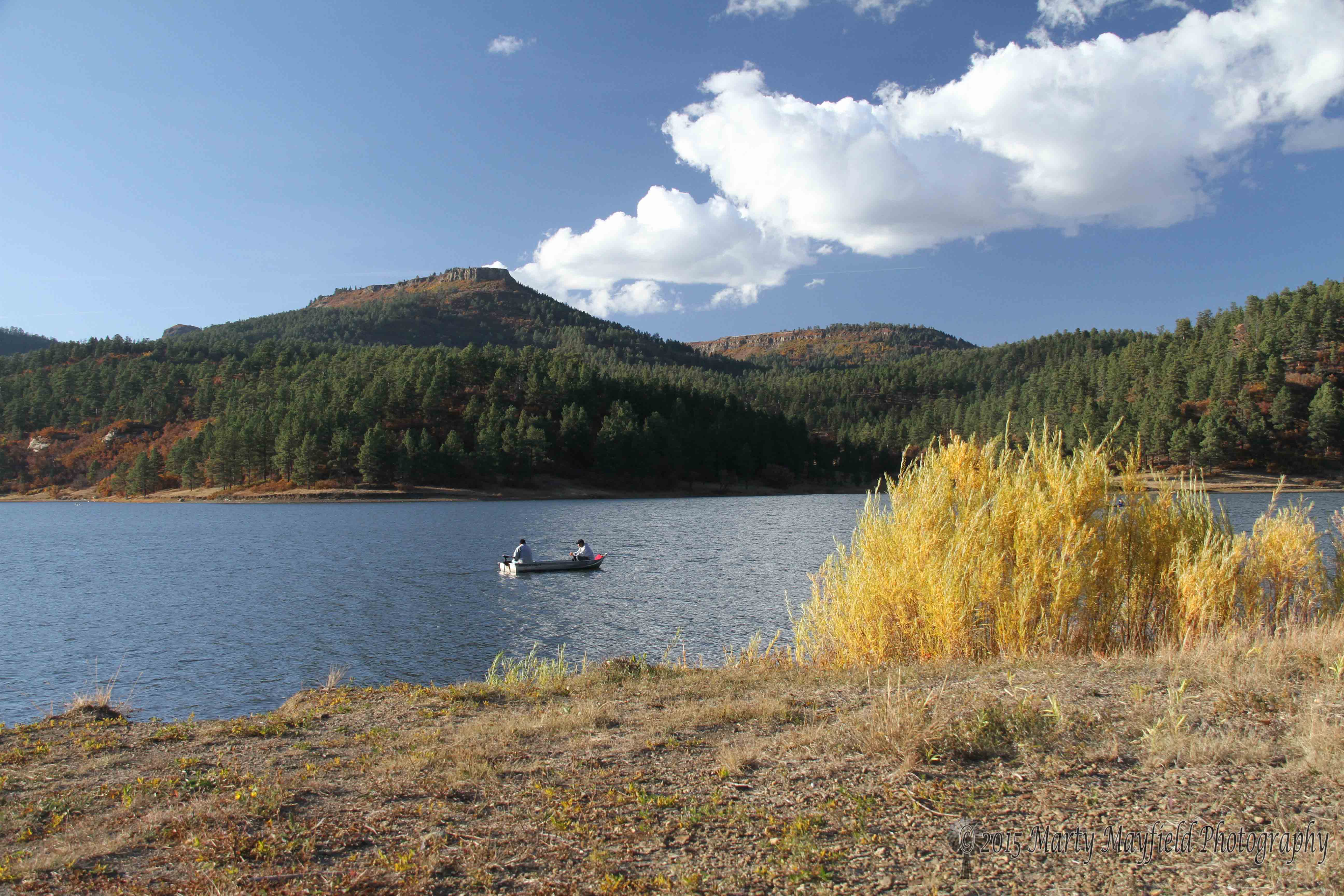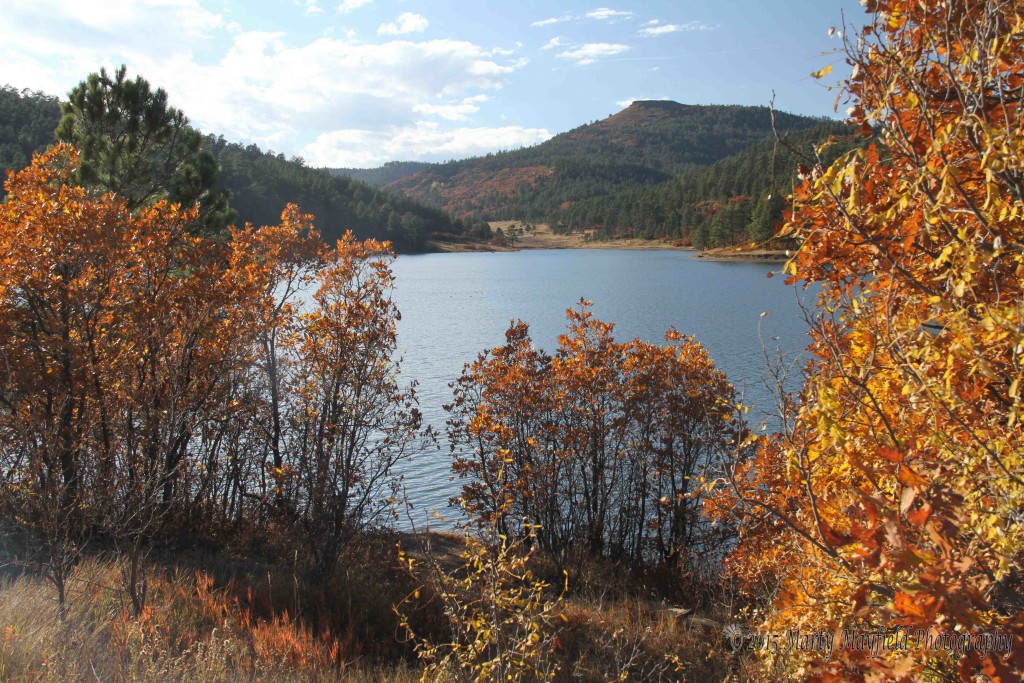By Marty Mayfield
KRTN Multi-Media
Raton Water Works is preparing for some expensive and lengthy projects at Lake Maloya with work on the dam and water intake facilities at Lake Maloya at the north end of Sugarite Canyon State Park.
Dan Campbell, Raton Water Works General Manager, noted that the 100 year old earthen dam has grown from one with only a few acre feet of capacity to a dam that now stores over 3000 acre feet of water for the city of Raton. While the dam has weathered many a storm with little problem the new regulations for emergency overflow will require the water department to engineer and expand the emergency spillway and or design a shield to protect the dam in the event of water spilling over the dam above the current small concrete spillway.
When the issue first came up in the 1970s it was calculated that the emergency spillway was about 50% adequate but with the new regulations and weather predictions they are estimating the emergency spillway to only be at 9% of the needed size to handle that catastrophic weather event. The emergency spillway extends from the current boat ramp to the east and around the east side of the dam.
The issue with the water intake is one of age. The conduits or piping was installed first in 1917 and has been extended as the dam grew in size. It was found that one of the pipes was leaking into the dam and as a result it was isolated and valved off while another pipe has been completely closed off with grout. The challenge now is to inspect the other two pipes and determine their condition. Are they in good enough shape to keep using, or are they leaking or crumbling? The pipes are made from cast iron and as the dam grew another section was added and made of concrete, a concrete tube.
The inspection will require the use of divers and a special camera to be placed inside the pipes. This will be a very expensive part of the project costing upwards to $300,000 to perform. Once the inspection is performed the water department will decide how to proceed. If there is damage one option is to use a sleeve inside the existing pipe. If the damage is worse the piping may be abandoned and a new system put in place. One of the concerns is seepage along the pipe or leaking from the pipe causing internal erosion to the dam.
They will also need to drill into the dam and place special sensors to monitor the level of seepage through the dam. Seepage is common in an earthen dam the question is how much is too much. With the age of the Lake Maloya dam the seepage through the dam becomes more of an issue.
According to Campbell and City Manager Scott Berry some of the issues had set on the back burner but with new regulations and more stringent enforcement the state engineers office has made it a higher priority and will also be seeking funding from a federal level and state level to help fund these projects. The city will need to have money available for matching funds, something the water department has been planning for by setting some money aside. Total cost of the projects is yet to be determined but Campbell has mentioned it will be in the millions of dollars.
As Campbell noted these will be expensive and long range projects, ones that will require specialized contractors to perform. He also noted that these will be projects that have to be performed with water in the lake. Draining the lake is not an option.
Watershed Restoration Essentially Complete
Raton City Manager Scott Berry reports that the restoration of the Lake Maloya watershed is essentially complete and it is time for Mother Nature to take over.
There is one small project on Segerstrom Creek to correct an erosion issue to complete this fall. The work has been delayed due to the endangered Jumping Mouse protection.
Berry noted that quick response by dirt contractors in the area helped to save the lake from major sediment deposits. The contractors were able to begin work on entrapment ponds even before the smoke had cleared on the Track Fire. Raton Water Works General Manager Dan Campbell noted in the conversation with KRTN that those seven ponds filled to about 60% capacity with sediment keeping that sediment out of Lake Maloya.
He went on to say that early on after the Track Fire that the filter plant had to deal with some turbidity issues but that has gotten better as time has passed. Raton was lucky too in that grass and oak brush quickly reestablished itself with rain after the fire and has continued to thicken and establish a natural erosion control.
Berry noted that it will take the watershed a long time to return to what it once was it has come a long ways since the fire.
Areas where work on the dam may take place
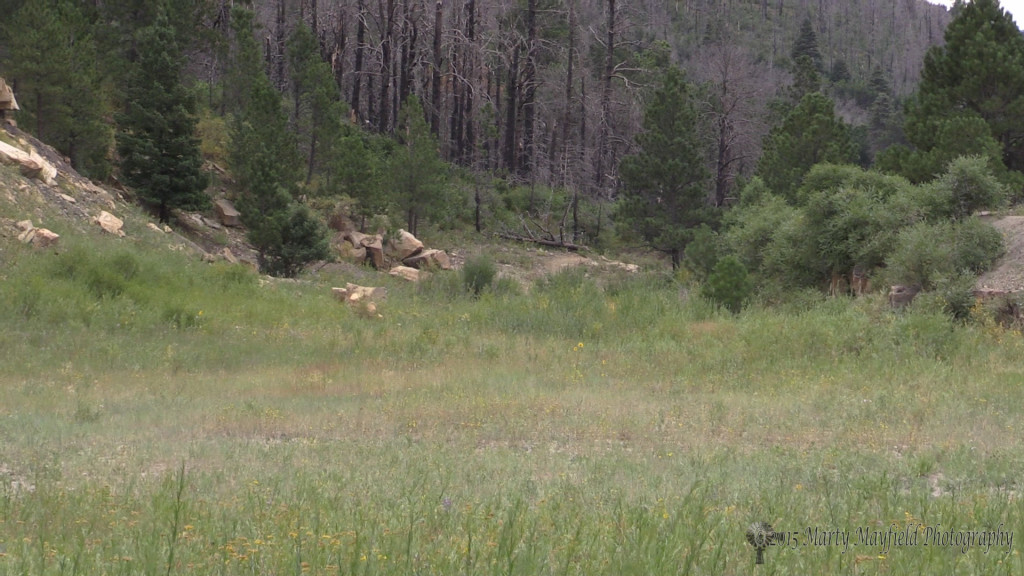
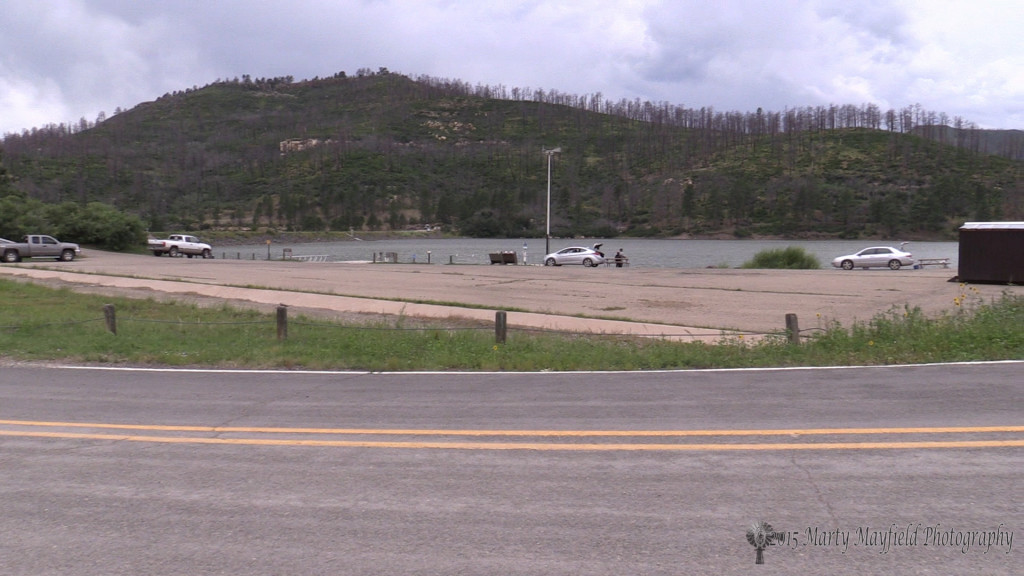
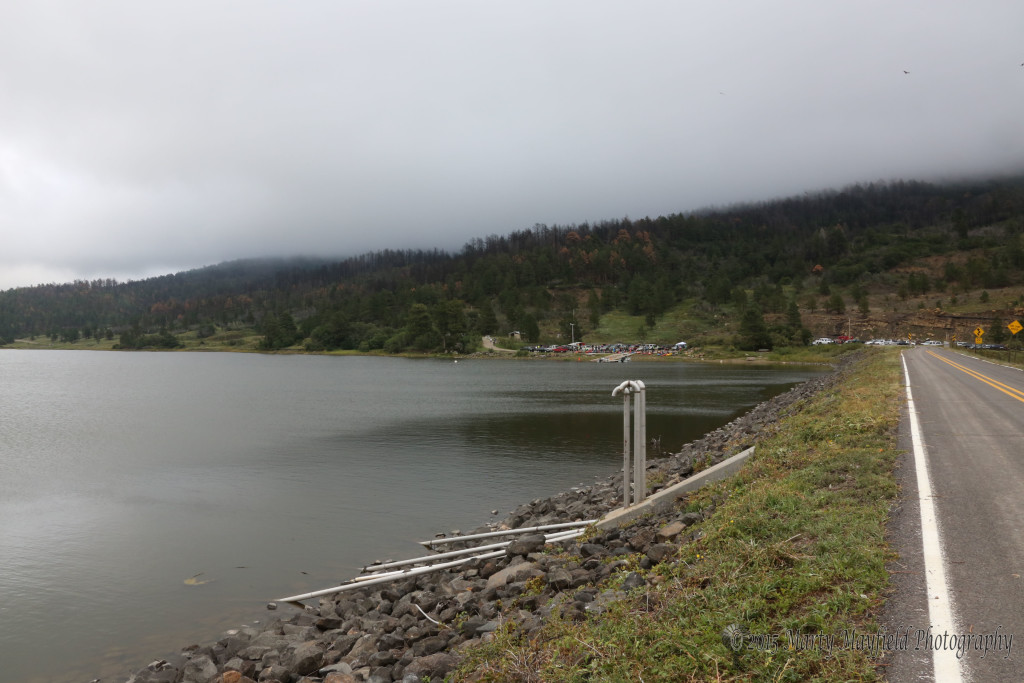
Before the 2011 Track Fire
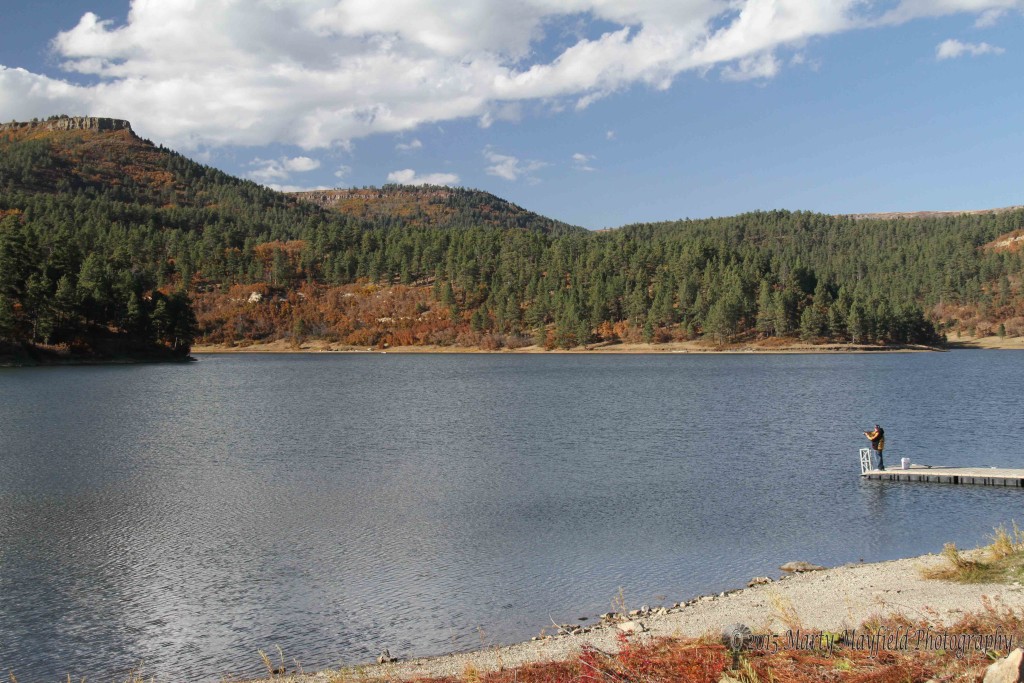

During the 2011 Track Fire
 Almost lost to the 2011 Track Fire had it not been for the efforts of the many firefighters
Almost lost to the 2011 Track Fire had it not been for the efforts of the many firefighters
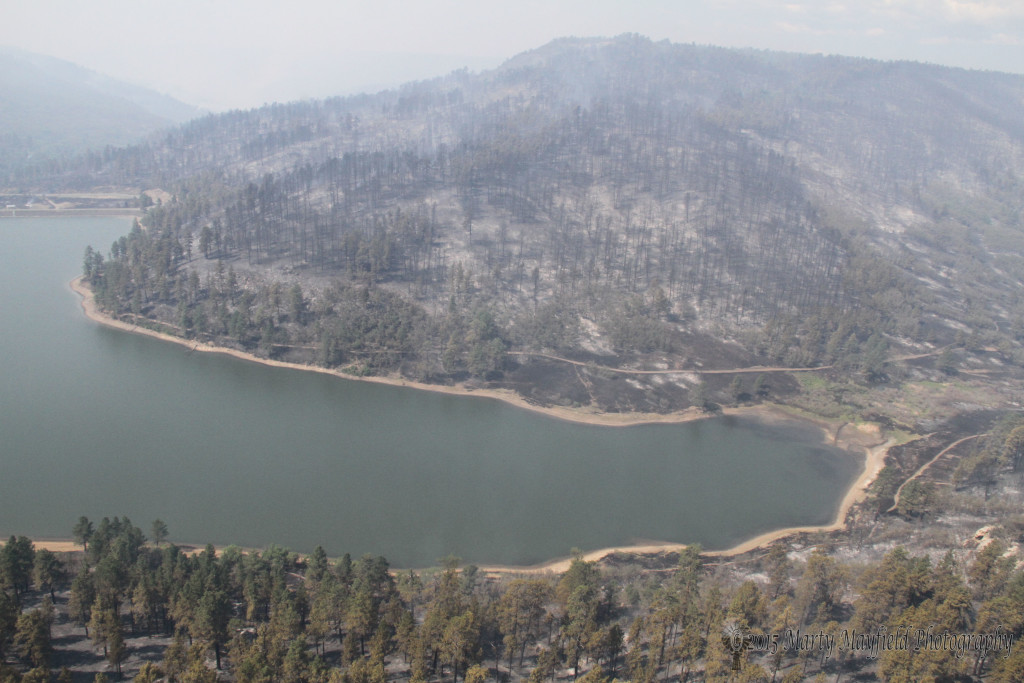

After the 2011 Track Fire
